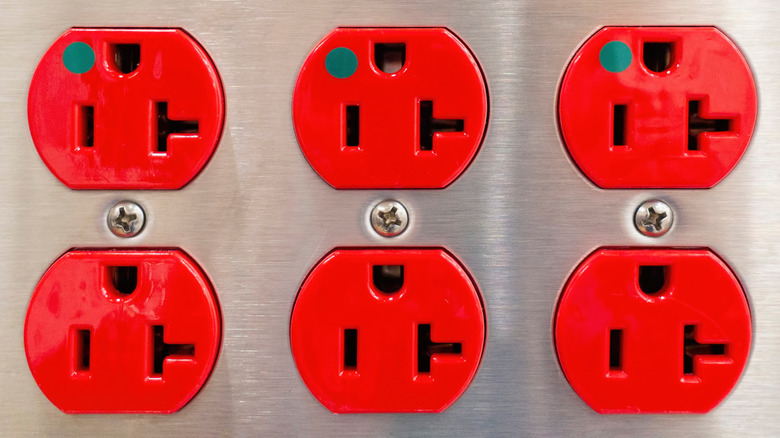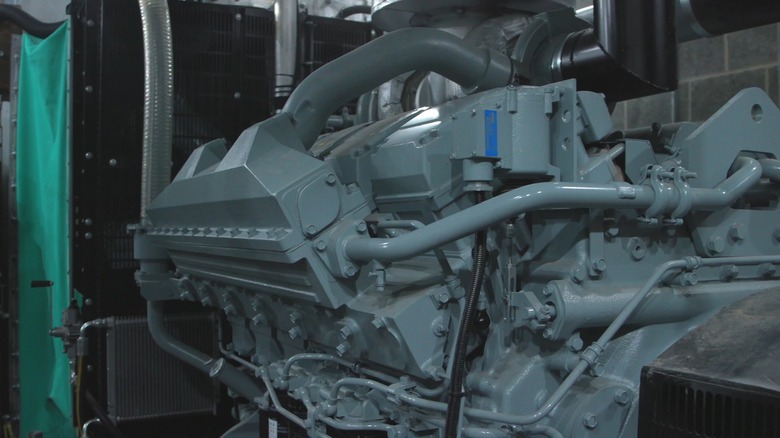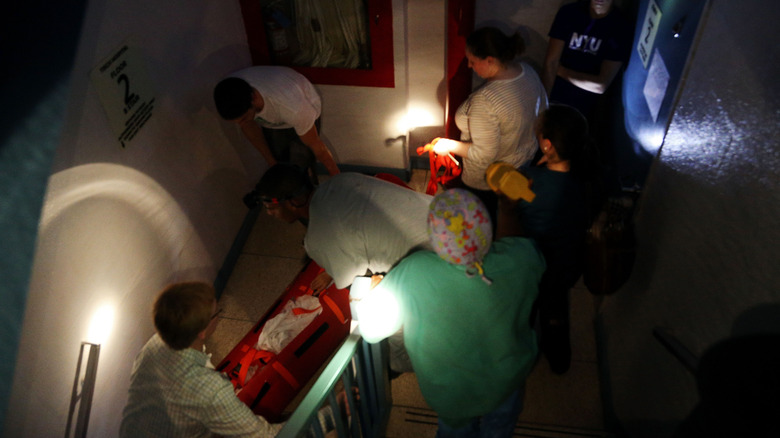What Are The Red Outlets In Hospitals For?
What do emergency triage, major surgery, and intensive care all have in common? They're all performed in a hospital, which is a concept that's existed for thousands of years, with records of healing centers in Sri Lanka around 431 BCE. Today, hospitals are increasingly complex, due in large part to the myriad of technology packed within them, which are dependent on electricity. For this reason, these facilities must be carefully planned out, accounting for a number of possible contingencies including power outages.
If you've been in a hospital, you may have noticed that some of the electrical outlets are red. This is an important distinction, because the red on the outlet indicates its connected to emergency backup power. With various pieces of medical equipment continuously working to keep people alive, it's vital for healthcare workers to know the best place to plug them in, otherwise a simple outage could be a matter of life and death.
Medical care facilities aren't just found in cities in the form of a large multi-story buildings, but can also be found traveling the world's oceans. What are hospital ships and what makes them so special?
How emergency backup power works in a hospital
The process of designing, building, and maintaining a hospital's emergency backup system is quite a feat of engineering. Imagine a severe storm knocks out the normal power to the hospital, immediately the system switches over to emergency energy. This engages a large fuel tank, and a series of generators, which are essentially huge engines to begin creating power. The fuel is fed to the generators from the tank, and the engines mechanical power is converted by an alternator into usable electricity.
This system is also overbuilt on purpose with backups of vital components ensuring redundancy. Applications engineer Samantha McGowan at Sunderland Royal Hospital in the U.K. (via Dr. Shini Somara's YouTube video "How an emergency power supply works"), explained, "So in the case of there's a power cut, we need the backup generator on, but what if it's got an error? We need a backup to the backup." While not as robust as a hospital's emergency power system, you can install a scaled down version of backup power for your home, provided you can afford the steep price tag. This begs the question, will a whole home generator ever pay for itself?
Does the backup power system ever completely fail? What happens then?
Even with costly and sophisticated emergency power components in place, sometimes even the backup power can go down too. It's a worse-case scenario for staff and patients, with equipment like ventilators powering off. For example, back in 2012, New York University Langone Medical Center experienced total power loss during Hurricane Sandy, including emergency power. This resulted in a complete evacuation of patients, including those considered critical. With no power, ventilators stopped running, and healthcare workers had to manually pump oxygen into these patients as they were rushed to another functioning hospital.
New facilities have requirements for the backup power system, such as ensuring the generators aren't low enough to be impacted by flooding, but pre-existing facilities do not. Bruce Altevogt of the Institute of Medicine and highly familiar with crisis standards of care explained, (via ProPublica), "These older facilities, it's just an economic issue. They don't have the resources, or they haven't devoted the resources to moving the equipment to locations that would be less prone to disasters or flooding in these cases."
Fortunately, this type of situation is rare. But hospital staff is still prepared in the event of total power loss, mobilizing a disaster command center, and implementing specific contingency plans, which includes transporting patients by ambulance to other hospitals. Speaking of ambulances, everybody is familiar with them, but few have laid eyes on the strangest emergency vehicles ever built.


